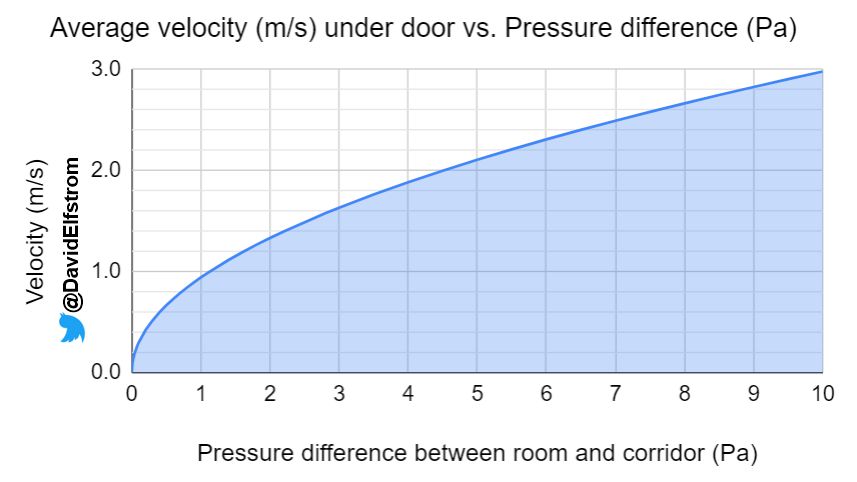
Genome sequencing analysis shows spread of new variant in HK in hotel quarantine between suites across from each other when the air flowed to the corridor. Here we go again—no amount of positive pressure in the suite is acceptable. /1
h/t @nzm8qs news.gov.hk/eng/2021/11/20…
h/t @nzm8qs news.gov.hk/eng/2021/11/20…
If there is a 5 Pa positive pressure difference between the suite and the corridor, air will shoot out under the door continuously at an average velocity of 2.1 m/s (higher in the centre). No open door required. For a 10 mm bottom door gap, that's 19 L/s (40 CFM) of flow /2 

I verified the calculations with measurements in an earlier thread, illustrating why NSW Australia's IPAC guidance for quarantine hotels allowing up to +5 Pa was ridiculous and ignorant of physics: /3
https://twitter.com/DavidElfstrom/status/1404118242357125126?s=20
What's the right way to do it? Compartmentalization is the best for new construction, because it has the lowest energy use. But all three below will work:
https://twitter.com/DavidElfstrom/status/1404118283259985931?t=VpTdETYRyYqesTgU6bQvyQ&s=19
• • •
Missing some Tweet in this thread? You can try to
force a refresh














